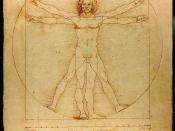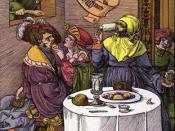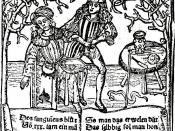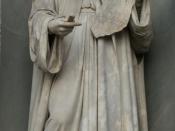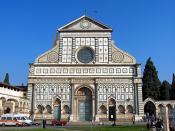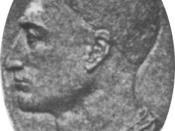How did the people of the Renaissance differ from those in the Middle Ages with regards to their attitude towards life, values, lifestyle, religious beliefs and appreciation of art."ÃÂ The Renaissance was a revival or rebirth of cultural awareness and learning among art, law, language, literature, philosophy, science, and mathematics, which occurred in the fourteenth, fifteenth and sixteenth centuries. It was a period, which saw the transition from the "dark ages"ÃÂ to modern times. In the "dark ages"ÃÂ people were only interested in fending for themselves. There was no interest in anything other than survival. When poor harvests and disease started leading to economic depression, wide-spread dissatisfaction resulted.
A time was born when people started contemplating about intellectual freedom. It was a movement that stressed, political, economical, cultural, and geographic changes through the birth of widespread individualism, materialism, humanism, and secularism. The pursuit of well-being in the Renaissance led to man's ability to change social status and his drive to capitalism.
Individualism stressed personality, uniqueness, genius, and full development of one's capabilities and talents. Artist, athlete, painter, scholar, sculptor, whatever "ÃÂ a person's abilities should be stretched until fully realized. Thirst for fame, a driving ambition, and a burning desire for success drove such people to the complete achievement of their potential. Leon Battista Alberti remarked that, "Man can do all things if they will"ÃÂ.
Materialism was the thirst for material and capital. This began with the idea that "money was power"ÃÂ. Modern banking was born, branch banking, double entry banking and letters of credit also were created. A change from goods to money economy led to the ability to change socio-economic standing, and create a new merchant class. The middle class was born.
Humanism is the feature of the Renaissance that became know as the "new learning"ÃÂ. Human beings, their achievements, interests, and capabilities became more important. Renaissance humanists studied the classics to understand human nature whereas medieval writers looked to the classics to reveal God. Renaissance humanists viewed humanity from a strongly Christian perspective: man and women were made in the image and likeness of God.
People saw holy figures as approachable people you could talk to.
With secularism life came to be seen more as an opportunity to be enjoyed than as a painful pilgrimage to the City of God. The idea was born that you could change your social stature in this life by becoming richer and thus having more fun instead of working hard and leading a devout life so that life after death would be socially richer.
Finally the differences between the middles ages and the renaissance are best revealed in the artistic masterpieces created during the renaissance. Art in the middle ages was overwhelmingly religious and educational in nature. In the renaissance art became "dazzlingly creative."ÃÂ Medieval painting reflected a spiritual ideal whereas Renaissance portraits mirrored reality. Individuals spent their money on works of art and architectural works where in the middle ages money was spent on military gear.
I guess you could say that the Renaissance brought a new freedom for individual development in day to day existence. The chains of the middle ages were released and men and women began to achieve their full potential.
